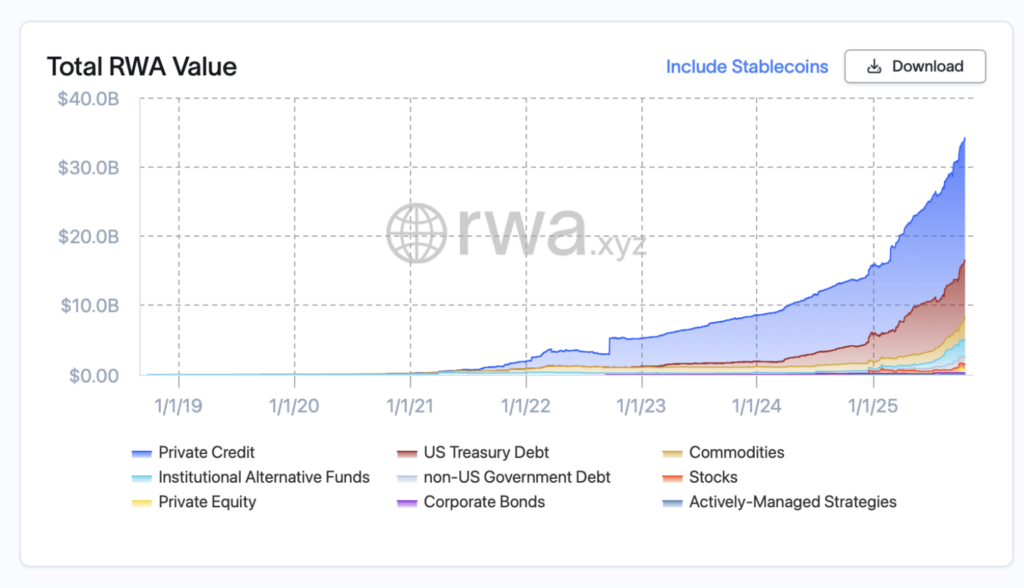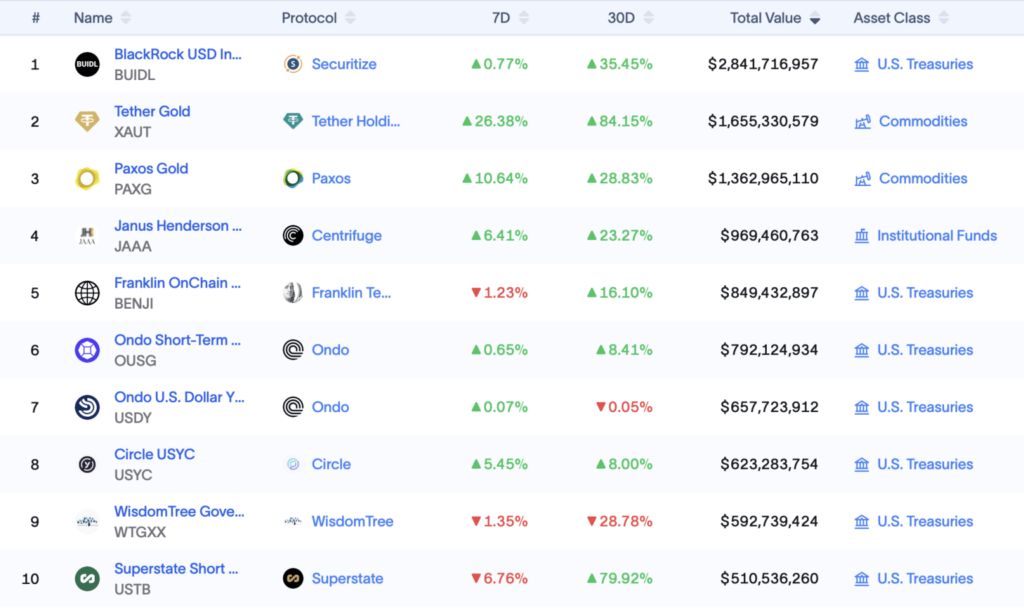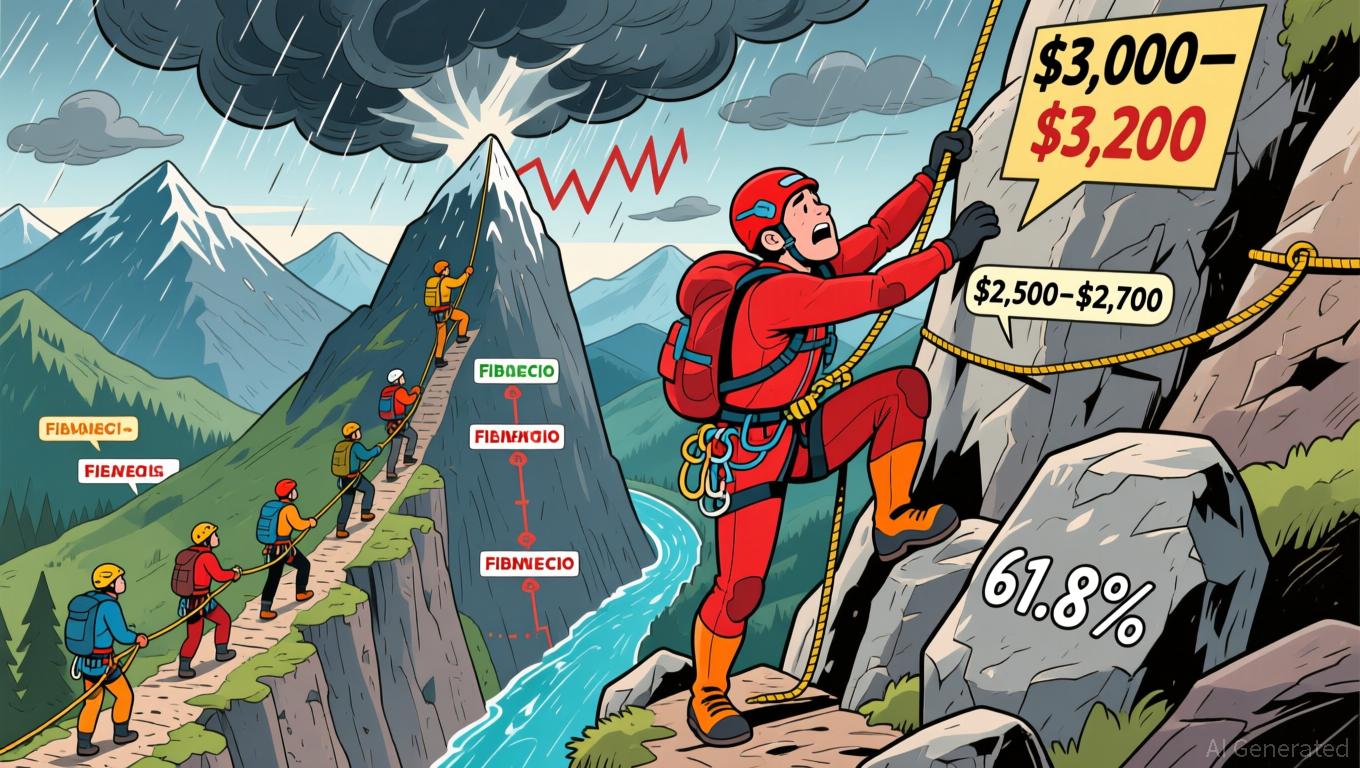RWA Market Nears $35B Milestone as Tokenized Treasuries and Institutional Adoption Accelerate Growth
The tokenized real-world asset (RWA) market continues its strong momentum, edging close to the $35 billion milestone as institutional products, Treasuries, and gold-backed tokens drive on-chain adoption. Recent data from rwa.xyz shows the total RWA value reaching $34.14 billion, marking a 10.58% rise over the past 30 days and signaling growing investor confidence in blockchain-based real-world exposure.

In brief
- RWA market grows 10.58% to $34.14B, reflecting rising investor trust in blockchain-based assets.
- Ethereum leads with 58% of RWA value as Arbitrum posts 122% monthly gains, signaling multichain expansion.
- Tokenized Treasuries and gold-backed assets record strong double-digit growth amid global yield demand.
- Institutional players such as Franklin Templeton, Ondo, and Fidelity drive RWA innovation and market depth.
RWA Participation Expands as Tokenized Assets Attract Broader Investor Base
RWA tokenization enables the representation and trading of off-chain financial instruments, including U.S. Treasuries, commodities, institutional funds, and private credit, on public blockchains. The appeal lies in 24/7 market access, faster settlement times, and composability with decentralized applications, enabling more efficient and global liquidity flows.

According to rwa.xyz, RWA participation continues to deepen as the number of asset holders climbed 6.71% over the past month to 489,037. At the same time, the total number of active issuers reached 225.
Ethereum Dominates with 58% Share as Arbitrum Leads Monthly Gains
Among public blockchains, Ethereum remains the primary hub for tokenized assets, with a total value of $12.48 billion. This figure represents a 20.73% increase over the past month and a 58.24% market share.
Here’s how other chains performed:
- zkSync Era holds second place with $2.37 billion in tokenized assets, marking a 2.46% decline and representing 11.04% of total market share.
- Polygon follows in third with $1.14 billion, down 3.74% over the month and capturing 5.31% of the overall market.
- Arbitrum posted a remarkable 122.3% surge, climbing to $874 million and securing 4.08% of the RWA market—its strongest monthly performance to date.
- Avalanche remained steady with $745.7 million, showing only a 0.56% dip, while Aptos edged slightly higher by 0.19% to $724.8 million.
- Solana advanced 5.04% to $695.9 million, supported by growing tokenization activity and increased DeFi integrations.
- Stellar, BNB Chain, and XRP Ledger rounded out the top performers, recording gains of 23.28%, 14.99%, and 3.45%, respectively.
The distribution underscores Ethereum’s continued dominance, even as emerging layer-1 and layer-2 platforms steadily gain traction.
Tokenized Treasuries and Gold Assets Post Double-Digit Growth
Treasury-backed RWAs remain the largest segment of the market, driven by institutional demand for yield and stability.
Performance-wise, here’s how key products fared:
- Franklin Templeton’s BENJI Fund advanced 16.10% over the past month, bringing its total on-chain value to $849.43 million.
- Ondo’s Short-Term U.S. Government Bond Fund (OUSG) climbed 8.41% to $792.12 million.
- Ondo’s U.S. Dollar Yield (USDY) remained largely unchanged at $657.72 million.
- Circle’s USYC recorded an 8.00% increase, lifting its total value to $623.28 million amid deepening institutional adoption.
- Superstate Short-Term U.S. Treasuries (USTB) delivered a standout performance, soaring 79.92% in 30 days to $510.54 million.
- Fidelity’s Digital Intermediate Treasuries (FDIT) rose 9.21%, while Janus Henderson’s JTRSY declined 14.51% to $295.20 million.

Commodity-backed RWAs, led by gold tokens , also saw strong monthly gains. Tether Gold (XAUT) surged 84.15% to $1.66 billion, while Paxos Gold (PAXG) rose 28.83% to $1.36 billion. These assets continue to attract investors seeking an inflation hedge and a blockchain-based store of value.
JSOY OIL remained relatively stable at $313.34 million, while government and sovereign-related products posted mixed results. China AMC USD (CUMIU) held at $503.10 million, and Spiko EU T-Bills (EUTBL) saw a slight decline to $324.58 million.
RWA Market Structure Strengthens with Clear Custody and Issuance Frameworks
In the institutional category, Janus Henderson AAA (JAAA) rose 23.27% to $969.46 million, while Blockchain Capital (BCAP) increased 11.49% to $404.96 million. Superstate Crypto Cash (USCC) grew 10.81% to $253.64 million, with Legion Strategies (LS) holding steady at $217.93 million.
Equity and private-market tokens showed mixed performance. Exodus Movement EXODB fell 12.77% for the week but remained flat for the month at $480.97 million, while EXOD declined 14.80% to $223.37 million. Despite short-term volatility, these instruments illustrate the growing reach of tokenized private and equity assets.
The RWA market structure remains steady and transparent, with issuers packaging familiar, yield-bearing assets into blockchain-based tokens. Custodians manage the underlying off-chain collateral, while blockchain protocols facilitate both issuance and secondary-market trading—forming a robust foundation for institutional-scale adoption.
Disclaimer: The content of this article solely reflects the author's opinion and does not represent the platform in any capacity. This article is not intended to serve as a reference for making investment decisions.
You may also like
CME Suspension: Global Market Vulnerabilities Revealed by Thermodynamic Constraints
- CME Group halted Globex trading on Nov 28, 2025 due to CyrusOne cooling system failure in Chicago, freezing 90% of global derivatives markets. - The outage caused erratic price swings in gold/silver and disrupted EBS forex platforms, exposing vulnerabilities in third-party data center reliance. - Despite post-holiday timing softening immediate impact, the incident highlighted systemic risks from thermodynamic limits in AI-era infrastructure. - CME faces pressure to build redundant systems as it expands c

Turkmenistan's Approach to Cryptocurrency: Navigating Government Oversight and Public Confidence
- Turkmenistan will implement strict crypto regulations from 2026, requiring miner registration, exchange licensing, and anti-money laundering protocols under President Berdimuhamedov. - The framework mirrors Central Asian neighbors' approaches but prohibits anonymous transactions, national symbols in branding, and hidden mining operations. - While aligning with global crypto oversight trends, the law maintains state control over digital assets, raising questions about market viability amid Turkmenistan's

Ethereum Updates Today: Institutional Optimism Meets Technical Challenges: The Pivotal Moment for Crypto
- Ethereum and XRP face critical technical junctures on Nov 28, 2025, with ETH testing $2,500–$3,200 support and XRP hovering near $2.30 amid mixed signals. - Bitcoin's bearish trend (50-day EMA at $100,937) contrasts with JPMorgan's "tradable macro asset" designation, potentially attracting institutional capital. - Solana's BONK memecoin launches a physically-backed ETP on SIX Swiss Exchange, bridging meme coins and traditional markets amid SOL's $140 support risks. - Market dynamics highlight institution

How a Query from an Office Supplies Specialist Transformed a $12 Billion Trucking Approach
- A non-trucking board member's question prompted Ryder System to shift focus from leasing to targeting 80-85% of companies owning their own trucks. - The strategic pivot aligns with growing demand in long-haul freight driven by e-commerce, trade agreements, and tech innovations like IoT fleet management. - Industry consolidation and sustainability trends, including electric trucks, are reshaping competition as firms expand specialized services like temperature-controlled logistics. - Ryder's experience hi

